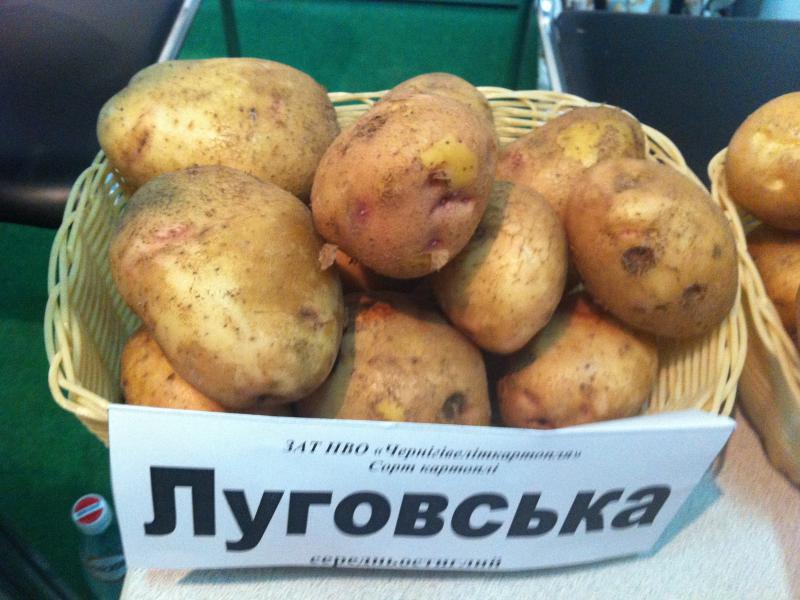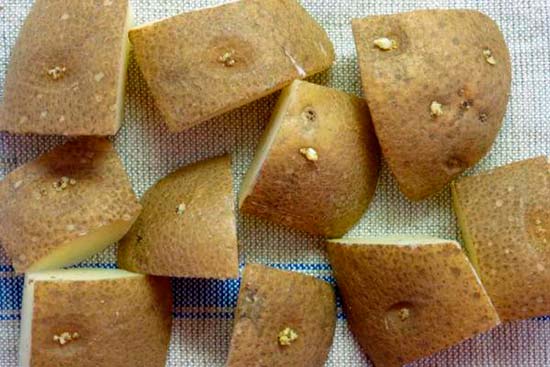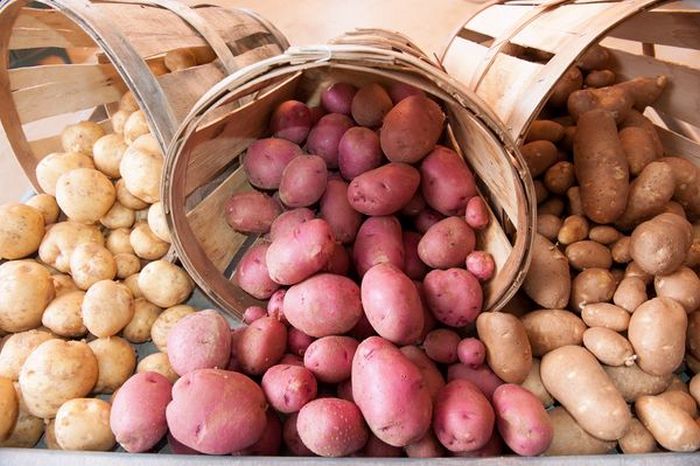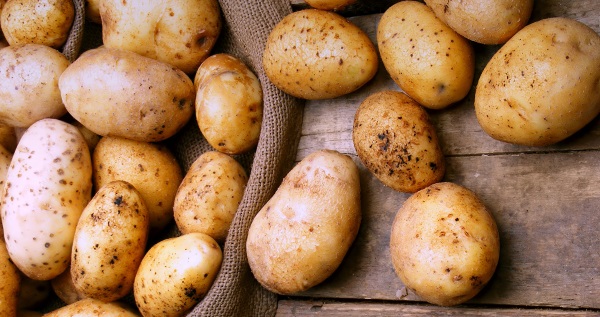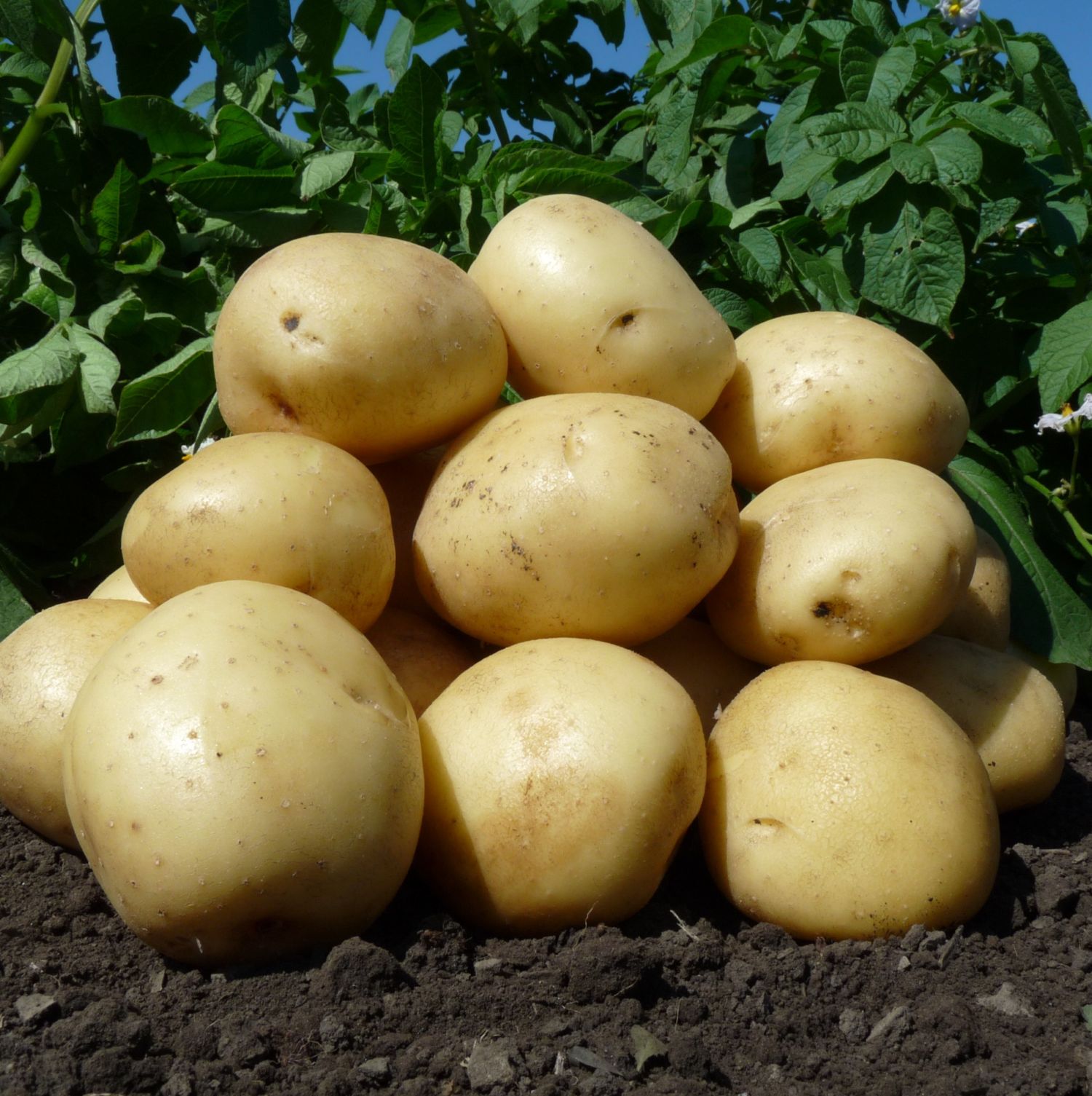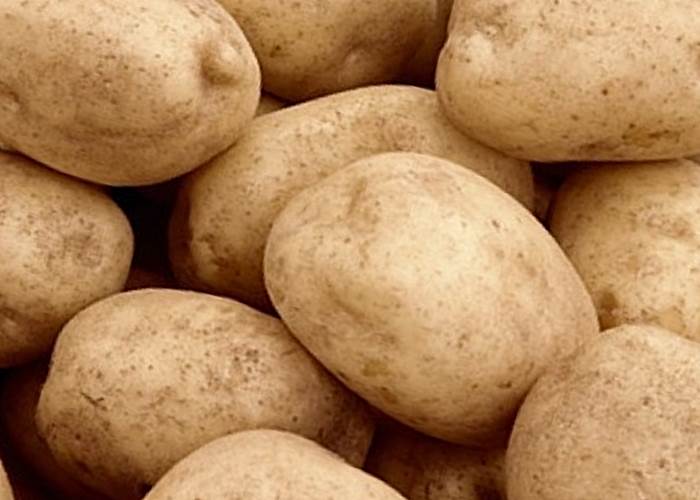Potato - the common name for potatoes, is the main garden crop grown almost everywhere in the world, even in the desert regions of the planet. In Russia, it is especially popular, among other vegetables, occupying a primary value, therefore it grows on every summer cottage or personal plot. With what this is connected, it is quite easy to understand - the culture is unpretentious in choosing the soil, does not require much attention to itself and is capable of producing abundant harvests. Much depends on its variety: how hardy it is in difficult climatic conditions, resistant to diseases and pest attacks, meaningful in terms of energy and nutritional value. Recently, the potato variety Lugovskoy has been chosen for cultivation; its characteristics, in general and in individual points, fully meet the stated requirements.
History of creation
Even a superficial description can convince many that few can compare with the Lugovsky variety. In all respects, it is much superior to Margarita and Hostess combined, which are quite popular among Russian gardeners.
As an artificially bred variety, applicable in the economy of different climatic zones, it is relatively young. This is the result of the work of Ukrainian breeders, one of the new varieties bred in 1987 in the Luhansk region, which is reflected in its name. The patent belongs to the Ukrainian Institute of Potato Growing, the selector department of the Academy of Agrarian Sciences. The basis for the creation was Sineglazka, another of the popular varieties of potatoes, the most suitable for planting. Lugovskoy is fundamentally different from him in all characteristics: in color, ripening time, yield, starch content, resistance to diseases and cold. In this Sineglazka does not compare with him and is inferior in all characteristics.
Characteristics and features
Especially Lugovskoy potatoes are valued for their excellent taste, do not darken when sliced, do not boil during cooking and contain a lot of nutrients. But this is only a small part of its countless advantages, the main ones are in the fact that it is like a vegetable in terms of cultivation, care, harvest volumes and other features. The main reasons why many gardeners prefer Lugovsky potatoes, its characteristics and features:
- Potatoes are large, above average in size, weighing in the range of 85-125 grams, small ones are practically not found. They have an oval shape, with a smooth, non-rough skin of a pale pink color, with a few small eyes, insignificant in deepening. Inside, the potatoes are snow-white, without the slightest signs of yellowness, due to the high content of starch in them, the concentration of which ranges from 12 to 19%. Good preservation, will not crumple or wrinkle until the next harvest;
- One of the most frost-resistant varieties, capable of tolerating frosts on the ground up to -80 С. It is thermophilic - planting in cold ground, can lead to root rot. Due to this, it is suitable for growing in most of the territory of Russia, in regions with difficult and unstable climatic conditions;
- It does not need a lot of moisture, which is especially true for arid regions. It is only important that during planting the soil is moist enough so that the root crop can take root. For the entire growth period: from planting to harvesting, 2-3 heavy rains are enough for it, but moisture is vital during flowering, when tubers are formed. If dry weather persists during this period, watering will be required so as not to lose crops. Enough and 2 times: when the bushes begin to bloom and immediately, as soon as they bloom;
- Lugovskoy belongs to mid-season table varieties, ripens quickly enough, especially if weather conditions are favorable. The growing season lasts from 70 to 80 days, that is, harvesting, depending on the time of planting, takes place on average 2.5 months after germination, mostly in mid-August - first half of September. Differs in high productivity, tubers consist of 12-15 large potatoes, with a total weight of 0.8 to 1.2 kg, on an industrial scale this is an average of 500 centners per hectare;
- Among the important characteristics is the resistance of the variety to various dangerous diseases, including viral ones, characteristic of the culture as a whole. The defeat of common scab, potato crayfish, black leg was not noticed, from which many varieties often suffer, especially elite ones. Signs of late blight are quite rare on the tubers and leaves of Lugovsky. The only thing that can damage it is an excess of moisture, if the summer is too rainy, there is a high probability of root rot;
- The potato bush is medium in height, compact, erect and not too sprawling. The stem is massive in thickness, dark in color, with many small branches. The leaves are small, but rather thick, with a sparse rough pile, have a rich dark green color, matte, with clearly traced veins, lighter than the leaf itself. Both the stem and leaves remain juicy all summer long and do not dry out, during harvesting this creates additional convenience - the tubers do not crumble and stay on the root system;
- Flowering is an important period in potato cultivation; it depends entirely on the time of planting and how favorable the weather conditions are. The bush blooms in 38-45 days, as the first shoots appear, in time - mid-July. It is noteworthy that it blooms and fades rather quickly - in 5-8 days. Flowers of this variety are represented by a compact corolla, collected from large inflorescences of white or pale cream shade. The berries are large, light green, tied quite rarely and crumble almost immediately.
Agrotechnical features
In the agrotechnical sphere, Lugovskoy potatoes are completely unpretentious, planting and growing conditions are standard, care is minimal. What is important, it is not picky about soils and bears fruit well even on impoverished ones, but prefers chernozems with a high sandy admixture. He does not "like" only clay soil, it takes root in it extremely poorly, tubers are rare with small root crops, and it is impossible to collect high yields in such places.
Otherwise, the cultivation feature looks like this:
- It all starts with the acquisition of seed material, if the potato of this variety has not been previously grown. It is better to buy it in trusted retail outlets, but not on the market, especially having a poor idea of what the culture looks like and by what signs it is easy to recognize it. Root crops must be dry, healthy, free from damage. It's not scary if they are in last year's land - this is a sure sign of proper preservation, but washed ones are not suitable for planting for many reasons;
- The next step is preparation for planting, expressed in germination.If the seed is stored in the basement, it should be taken out to a warm place with good air circulation, 3-4 weeks before the planned planting. Some vegetable growers advise just before planting in the ground, in 2-3 days, lay it out in the sun in a thin layer. But you should not do this - there is a high probability of damage to the sprouts, such a procedure will only hurt. It is necessary to leave it as it is, the culture will germinate perfectly in the box, already on the day of planting, treat it with drugs that protect against pests, accelerate growth, and dry it thoroughly;
- Just before landing, you need to select a site and prepare it. It is not worth bringing humus into the soil - this is done in autumn, preferably with humus or ash with ash from burnt wood. The area where the potatoes will be planted does not have to be fully illuminated, the main thing is not very shaded, in such places the stem grows well, taking moisture away from the tubers. It is desirable that in the previous year, other root crops did not grow on the selected site: carrots, beets, turnips and others;
- The usual time when it is recommended to plant potatoes is different for individual regions, for the middle lane it is the second half of May. It is not the time that is important, but the accompanying conditions: the earth should be loosened, soft and fluffy, sufficiently damp and warmed up to at least + 8-100. The holes or grooves are made 10-12 cm deep, the ideal distance between them is 40 cm, more than a human foot. Many people note that the main condition for planting material is its integrity, but this is not necessary - if the potatoes are large, they are cut in half and laid with a cut down;
- If there is no rain at the time of planting, and they are not expected in the near future, after the potatoes are in the ground, the entire area must be watered and mulched abundantly so that the moisture remains longer. Such measures are of primary importance - the culture needs to take root, and then firmly endure dry periods;
- The main care required for potatoes is periodic weeding, if the planted area is overgrown with weeds, and hilling is carried out 2 times during the season, this is necessary for the formation of additional tubers, which increases the yield. The first time they spud when the bush rises to a height of 18-22 cm, the second time before flowering, when the buds appear. It should be carried out after rain or watering, when the soil is moist enough, raking it up to the trunk. There is no point in doing this when the ground is dry;
- In case the soil is too depleted, you will need to feed the planted potatoes. At the moment when its growth begins, it is in dire need of substances such as potassium and phosphorus. If their concentration in the soil is insufficient, they must be applied independently. For this purpose, nitrogen-based fertilizers are used, but they cannot be applied directly to the wells during planting, granules for feeding are simply poured over the ground before rain or watering. Upon contact with water, they dissolve and, together with the liquid, evenly penetrate the soil, saturating it with useful substances;
- If pronounced signs of late blight appear on the bushes, rarely, but this also happens with the Lugovskoy potato variety, you need to immediately sprinkle the plants with special preparations in order to prevent their spread. Modern means, such as Kuproksat, Fitosporin and others, quickly cope with this problem, the main thing is not to exceed their permissible concentration, so as not to burn the bushes. Spraying is also applicable in pest control, with agents like "Intavir" or "Commander", well ridding potato bushes from the dominance of the Colorado potato beetle, spider mites and cicadas.
Pros and cons
Few people will deny the advantages of this variety, they can be listed for a long time, therefore it is worth dwelling on the main ones:
- excellent indicators of frost resistance, inaccessible to most other varieties;
- non-susceptibility to common potato diseases;
- rich content of starch, vitamins and nutrients in root crops;
- early ripening and high yield rates;
- minimal care that does not take too much time;
- large fruits, complete absence or minimal presence of small ones;
- good transportability and long-term preservation;
- the density of the culture, which creates its resistance to mechanical damage;
- ease of cleaning tubers due to their flat surface;
- non-degeneration of the variety, due to which it bears fruit equally well in one place;
- excellent taste and cooking conditions.
As for the disadvantages, there is only one - it deteriorates with an excess of moisture.
Obviously, Lugovskoy is one of the best varieties; everyone who is tired of looking for the ideal option should definitely pay attention to it. Although it is wrong to call it ideal, such a number of pluses in its favor and almost complete absence of minuses oblige to do this.
